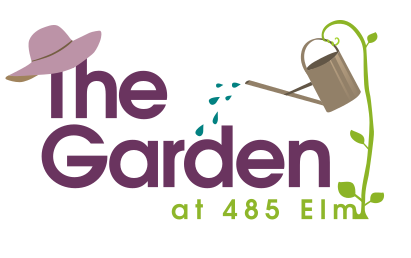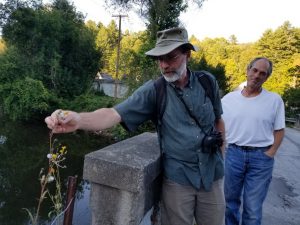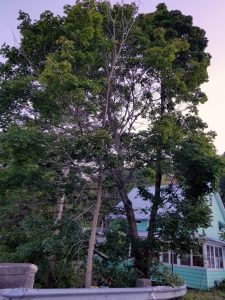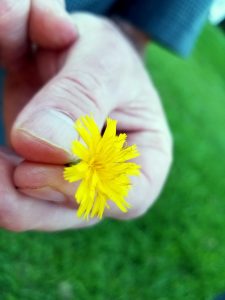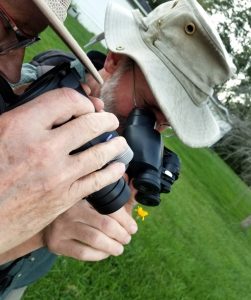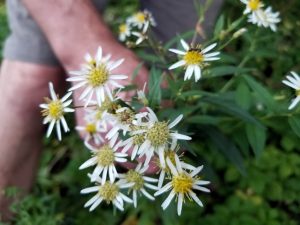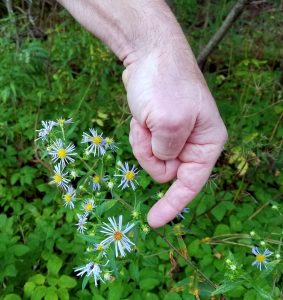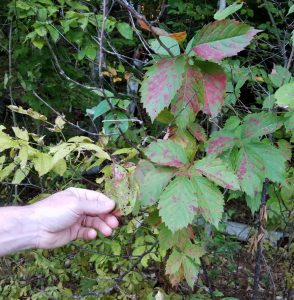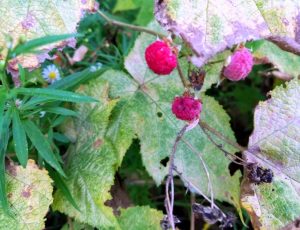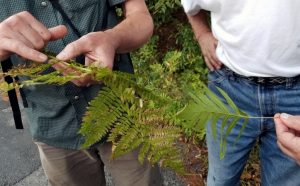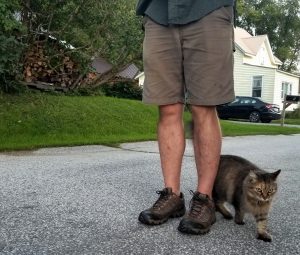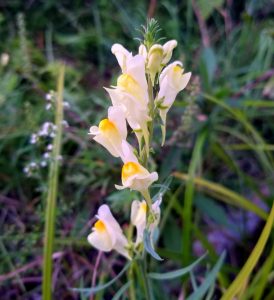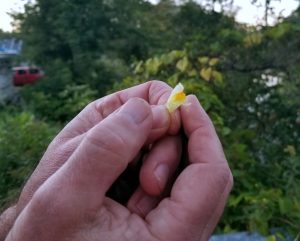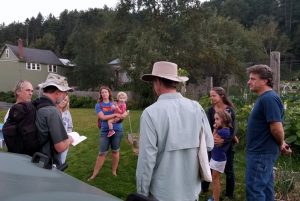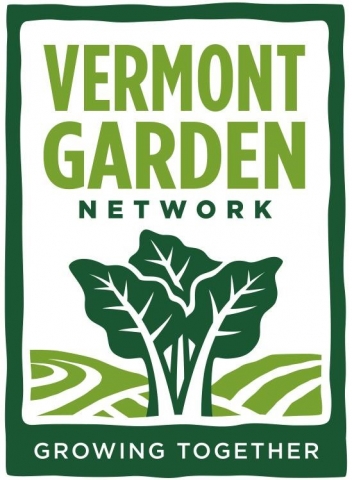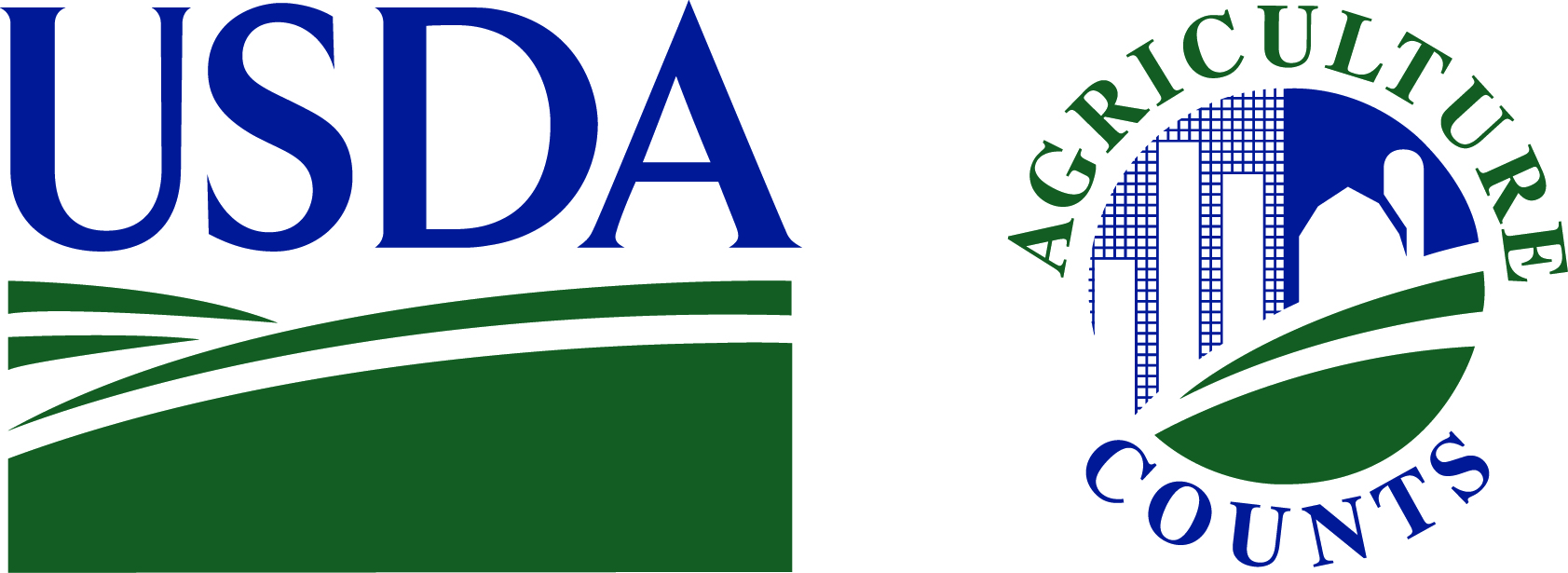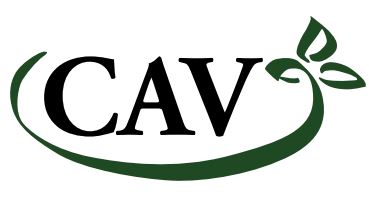On a beautiful September evening, naturalist Ned Swanberg led gardeners and visitors through the diverse life along the North Branch, where the Garden at 485 Elm grows.
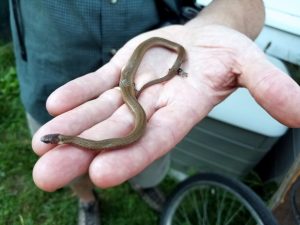
On his way to tonight’s walk, Ned found this poor snake dead on the road. The snake had sought warmth on the blacktop and been run over.
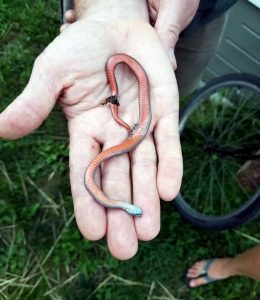
This small traffic victim is not the ubiquitous garter snake, but a full-grown red-bellied snake. Ned contributed photos to the iNaturalist.org database via a phone app.
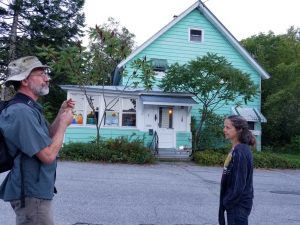
Male and female sumac trees growing in front of a neighbor’s home. This staghorn sumac is of no interest to birds until they’re desperate for food in the scarcity of spring.
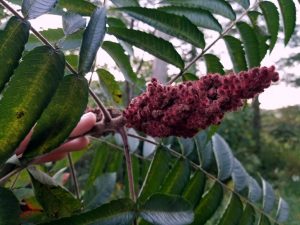
People hear “sumac” and think, “Uh-oh, poison sumac.” Actually, poison sumac is very unusual to find. This is staghorn sumac, and one can make it into a tasty “sumac-ade” beverage.
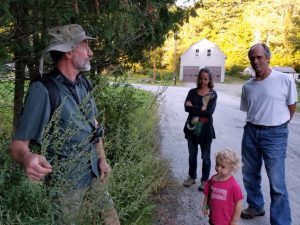
Artemesia, or wormwood, was used to make the storied drink absinthe. It’s growing along this road, along with ragweed. It grows on roadsides because it can take lots of abuse. Ragweed is what people tend to have allergic reactions to, not, as is sometimes thought, goldenrod.
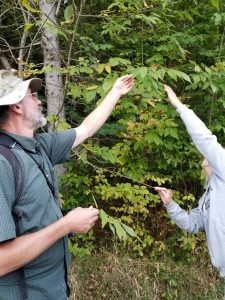
This is a white ash tree, which will disappear from our landscapes in the next five years as emerald ash borers spread.
